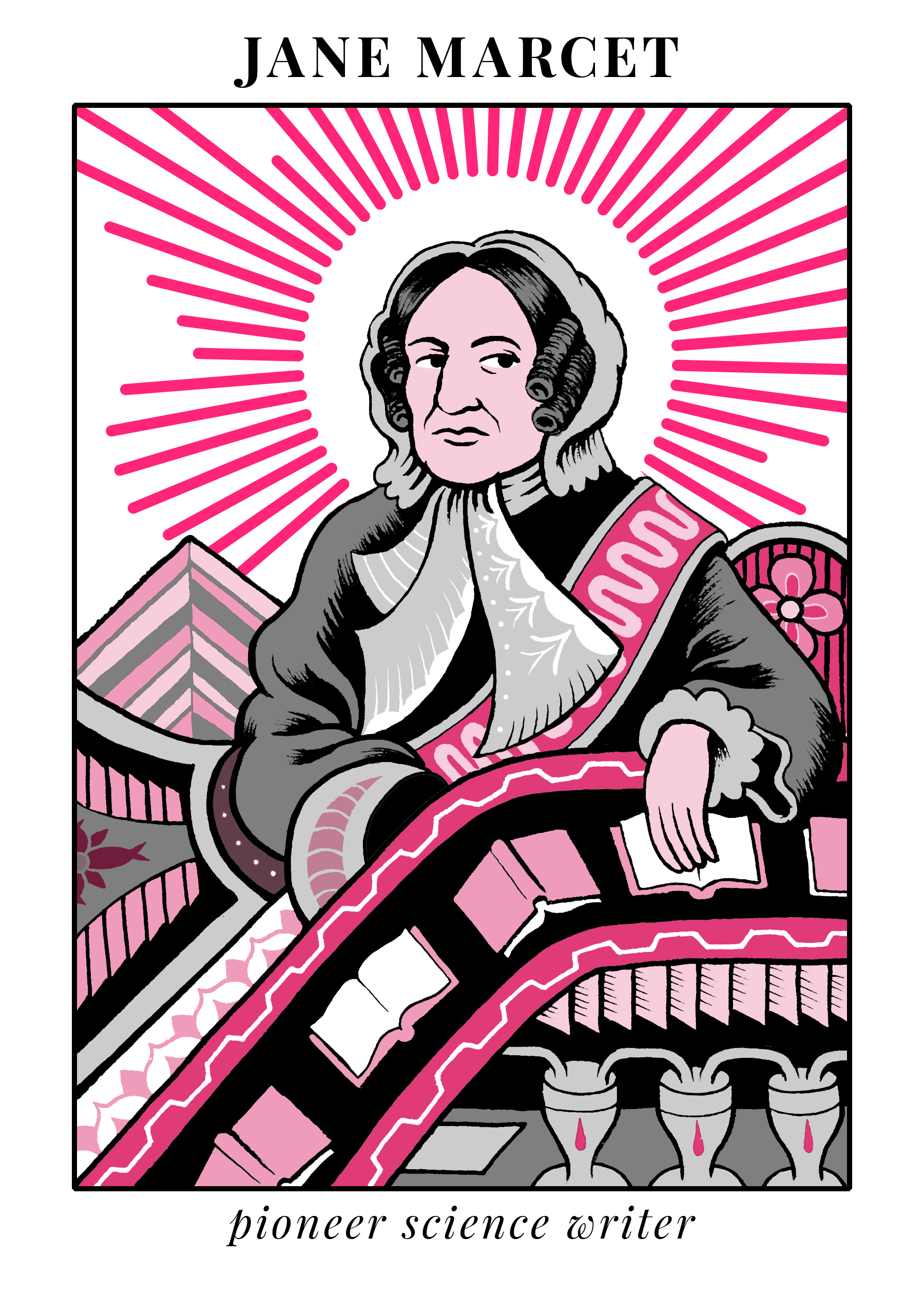Meet Jane Marcet, whose books made science accessible
She recreated her own informal learning process in print, to much success
Matteo Farinella
Imagine strolling into a London bookstore in 1805, running your hands through rows of neatly-shelved books. If you weren’t a man from a rich family, you probably skipped over all the science and philosophy books because you weren’t supposed to be able to understand those subjects.
Suddenly, a newly published book caught your eye: Conversations on Chemistry, Intended More Especially for the Female Sex. The author wasn’t named, but you read along as a character named Mrs. B explained everything from electricity to carbon to her two students, Caroline and Emily. It wasn’t until the 12th edition of Conversations was published that the world saw the author’s name: Jane Marcet.

Matteo Farinella
She didn’t have a formal science education
Jane Marcet lived in London in an era when experimental lectures were incredibly popular. Humphry Davy at the Royal Institution started his series of lectures in 1801 by demonstrating the power of electricity produced from chemicals. As Marcet attended these lectures, she found herself wanting to learn more. Her lack of formal science education, however, made it hard to follow along with the "rapid demonstrations" packed into the lectures. Through conversations with a friend (some say this friend is her husband Alexander, who was a physician and a chemist) and repeating various experiments herself, the lectures became more accessible. The conversations she had with her 'friend' became an inspiration for her Conversations on Chemistry, and the Conversations book series in general.
Seeing the need for a beginner's text on science, especially for women who did not have any science education, she published the first edition her Chemistry book anonymously in 1805. One of her physicist friends, John Yelloy, coordinated the editing and publication of the book. The conversational style and detailed descriptions of experiments are callbacks to how she herself learned about chemistry, and that winning combination proved successful enough to sustain 15 more editions of the book.
She had an extremely successful writing career
Marcet had a diverse bibliography, writing everything from children’s grammar books to her Conversations series. The series covers chemistry, economics, and botany, among others. In Conversations on Political Economy, for example, Mrs. B covers the theories of Adam Smith and Malthus with Caroline and Emily. She even illustrated all her books herself with diagrams of experiments for people to try at home.
Her Conversations series was extremely popular not only in the UK, but also in the US. American publishers released 23 editions of the work and an American college professor even released his own imitation. Over 160,000 copies of her book were sold here by the time the 16th edition came out in 1853, and it became the most successful elementary chemistry textbook in 19th century America.
Her views on education were progressive for her time
In the Conversations series, she attacked how science concepts are traditionally presented: by “treating first of the simplest bodies, and then gradually rising to the most intricate compounds.” Science is too interconnected to be presented as a dry list of facts, she thought, and her use of written dialogue between Mrs. B and her students in Conversations demonstrates that brilliantly. She made it a point to state early on in Chemistry that they would not be “entering into the minute details of practical chemistry,” but instead would focus on the big picture of the field.
She also supported educating women in subjects traditionally dominated by men, saying in the preface of Chemistry, “the establishment of those public institutions, open to both sexes, for the dissemination of philosophical knowledge[…] clearly prove that the general opinion no longer excludes women from an acquaintance with the elements of science.” When Caroline said that women could plead ignorance of economics in Political Economy, Mrs. B replied by saying, “When you plead in favor of ignorance, there is a strong presumption that you are in the wrong.”
Jane Marcet may not have a formal scientific education, but her influence in the scientific world is undeniable. Nineteenth-century scientist Michael Faraday credited Chemistry with his foundational knowledge, and astronomer Mary Somerville stated that “no one at this time can duly estimate the importance of [her] scientific works.” The unapologetically female voices in the book encouraged more women to take on scientific careers, such as Sarah Frances Whiting, who established the second physics laboratory in the United States in 1878, and Maria Mitchell, the first American female professional astronomer.